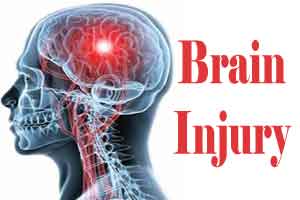- Home
- Editorial
- News
- Practice Guidelines
- Anesthesiology Guidelines
- Cancer Guidelines
- Cardiac Sciences Guidelines
- Critical Care Guidelines
- Dentistry Guidelines
- Dermatology Guidelines
- Diabetes and Endo Guidelines
- Diagnostics Guidelines
- ENT Guidelines
- Featured Practice Guidelines
- Gastroenterology Guidelines
- Geriatrics Guidelines
- Medicine Guidelines
- Nephrology Guidelines
- Neurosciences Guidelines
- Obs and Gynae Guidelines
- Ophthalmology Guidelines
- Orthopaedics Guidelines
- Paediatrics Guidelines
- Psychiatry Guidelines
- Pulmonology Guidelines
- Radiology Guidelines
- Surgery Guidelines
- Urology Guidelines
Individual non-invasive tests not sufficient to diagnose increased intracranial pressure: BMJ

Simple tests based on physical signs are not sufficiently sensitive to detect increased intracranial pressure (ICP), a life-threatening build-up of pressure around the brain due to a head injury or illness. Now researchers say these tests “should not be used independently to rule out the condition” and that critically ill patients with suspected increased ICP should be transferred to a more expert centre for further monitoring.
Tests typically include checking for dilated pupils, abnormal posturing and reduced level of consciousness, or identifying signs of brain injury on a CT scan. Doctors often have to rely on these tests, but their accuracy is unclear.
They base their findings on the results of 40 studies investigating the accuracy of non-invasive tests (physical examination and imaging) among 5,123 critically ill adults. All eligible studies were thoroughly assessed for bias (problems in study design that can influence results).
Sensitivity and specificity were calculated for each test. Sensitivity measures the percentage of people who are correctly identified as having a condition, while specificity measures the percentage of people who are correctly identified as not having a condition.
Three physical signs typically associated with brain injury were evaluated.
Presence of dilated pupils had a sensitivity of 28% and a specificity of 86% for detecting increased ICP. This means that 72% of patients with the condition would be missed and 14% of patients would be wrongly identified as having the condition.
Abnormal posturing had a sensitivity of 54% and a specificity of 64% for detecting increased ICP, while reduced consciousness had a sensitivity of 76% and a specificity of 40%.
CT imaging signs typically associated with brain injury were also evaluated. These had better diagnostic accuracy, but are not available in all centres.
For example, absence or compression of basal cisterns (fluid-filled spaces between brain lobes) had a sensitivity of 86% and a specificity of 61%, while any midline shift (a shift of the brain past its center line) had a sensitivity of 81% and a specificity of 42%.
Several other non-invasive tests also had poor accuracy for increased ICP.
Despite a comprehensive search and examination of commonly used methods, this review has some limitations, say the authors. For example, clinical signs were evaluated independently but, in practice, a combination of signs are used to arrive at a diagnosis, while measurement of diagnostic tests could also vary between studies.
Nevertheless, they say their findings show that individual physical examination and CT findings are not adequately accurate in the diagnosis of elevated ICP.
“Our study suggests that decisions related to the use of monitoring should not simply be restricted to any one specific physical examination or CT criterion, but rather a more comprehensive view should be taken, focusing on patient factors, factors related to brain injury, as well as clinical signs,” they conclude.
For more details click on the link: http://www.bmj.com/content/

Disclaimer: This site is primarily intended for healthcare professionals. Any content/information on this website does not replace the advice of medical and/or health professionals and should not be construed as medical/diagnostic advice/endorsement or prescription. Use of this site is subject to our terms of use, privacy policy, advertisement policy. © 2020 Minerva Medical Treatment Pvt Ltd